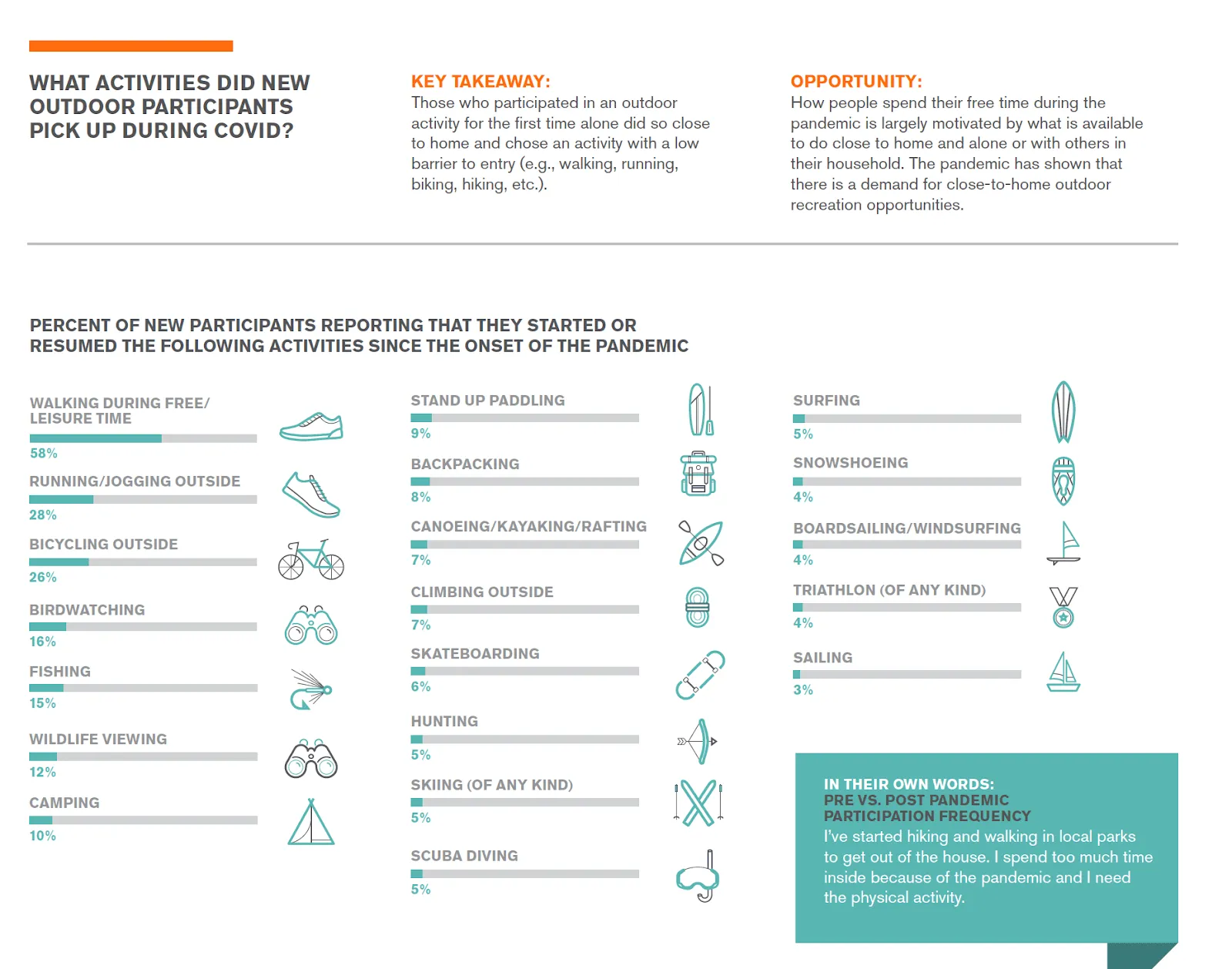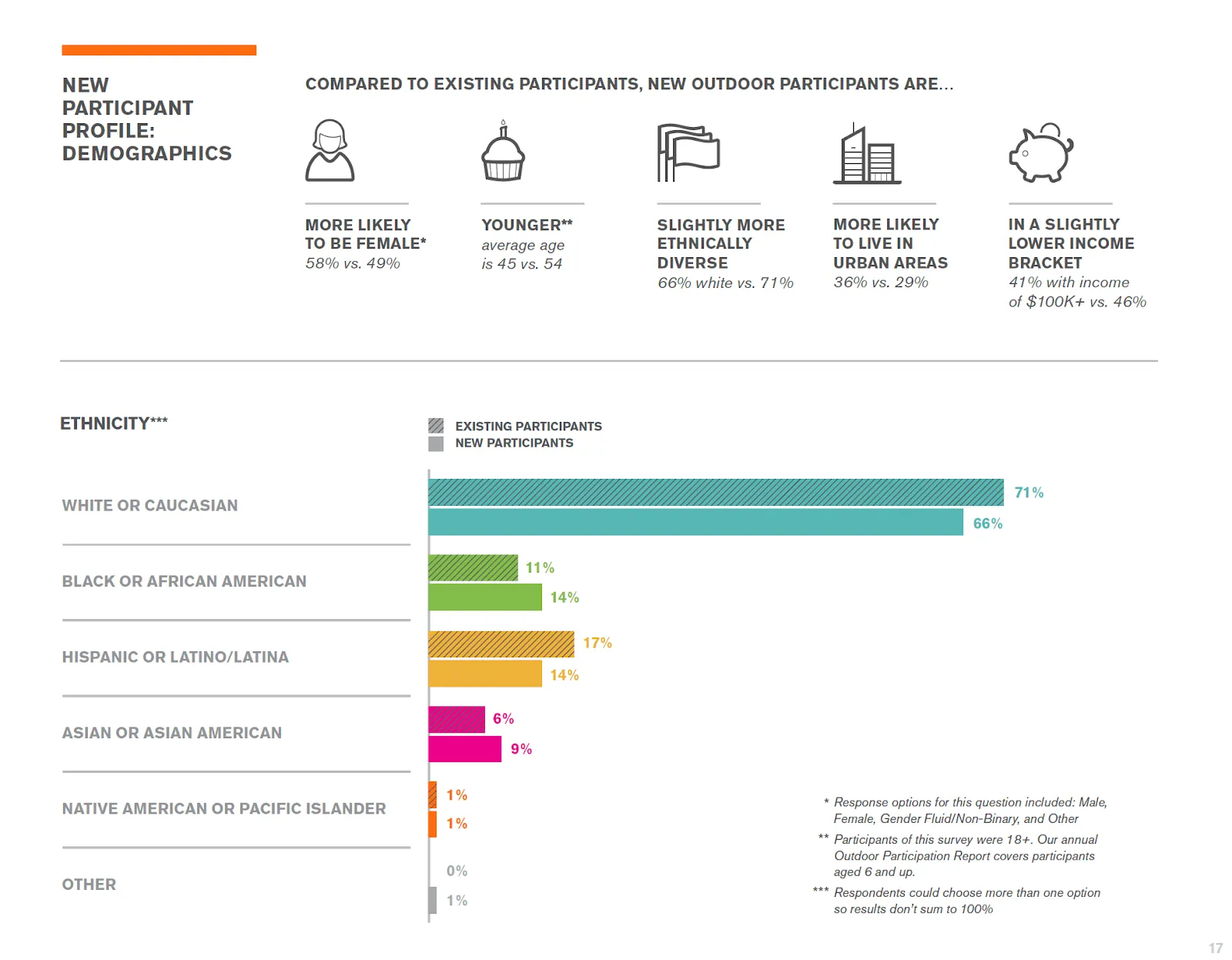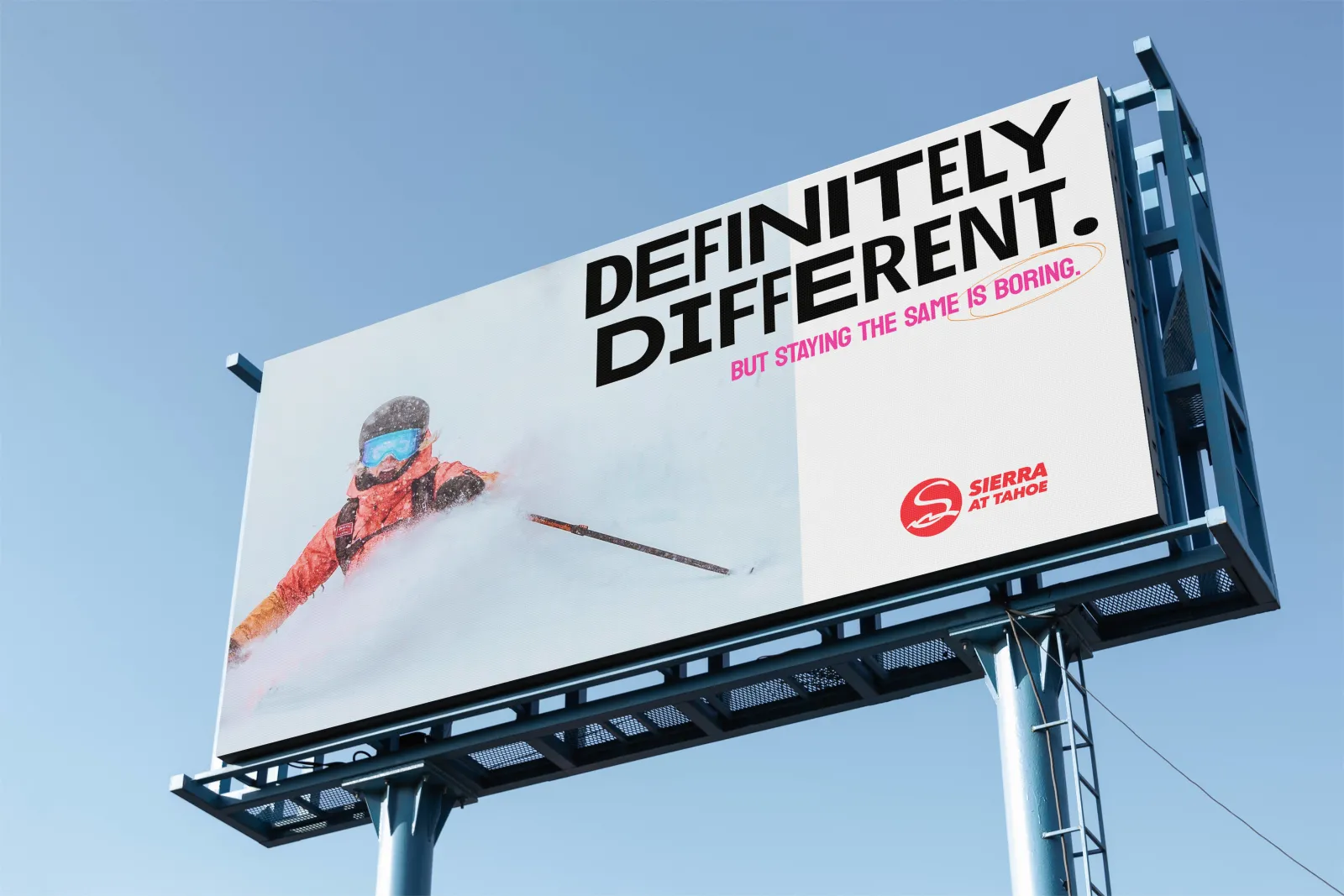Brand strategy for the rise in outdoor participation
The massive rise in outdoor sport participation as a result of the pandemic has been well documented and felt across the industry. Some of us are seeing it in the doubling of our e-commerce business, or in our struggle to find parking at historically-empty trail heads. Collectively, those of us in the outdoor industry are seeing it in Q1 earnings as outdoor businesses returning with a vengeance. Outside Journal declared that “A year after the pandemic decimated their top and bottom lines, publicly traded outdoor companies are posting blowout quarters to begin 2021.”
The reasons for increased outdoor participation are well documented in the OIA’s recently published report. What’s fascinating to us is not what’s on that list, but rather, what’s missing. According to the OIA report, there’s not a deep burning desire to have fun, get a charge of adrenaline, or push limits (hint: these are the exact key messages from many outdoor campaigns). Instead, people flocked to the outdoors for reasons of mental health, connection to nature, spending quality time as a family and getting kids off screens (hint: these are not messages we typically associate with outdoor activities or the brands that are marketing them).
Although the OIA report is indisputably good news for the outdoor industry, it does contain a warning we should all heed: One quarter of new participants say they will NOT stick with their new outdoor activity once life returns to normal. I’ve dug into this further and we can see the logic behind this response. For instance, people report that they’re looking forward to resuming previous activities, such as travel, shopping, dining out, and going to the gym. And as the pandemic wanes, they’ll also resume the many family obligations that filled their days and left them starved of the time necessary to get outside. The question we need to be asking ourselves is this: What can we do to make sure our activities are as appealing as possible, and remain top of mind for these new participants?
Let’s start with who these new participants are:
For the ski industry specifically, we have no data yet but, as reported in Travel Weekly, the ski industry’s clientele got younger and more diverse during Covid.
The OIA report provides the following recommendations for retaining these new participants:
Here’s my take.
First, be sure to represent these new participants in your marketing efforts - generally speaking, they’re younger, more diverse, and from urban environments. Is that what you’re showcasing in your brand materials? It better be.
Obviously, from a DEI standpoint, everyone knows the importance of widening your recruitment efforts. Especially if you have front-line or consumer engagement staff, diversity starts internally. It goes without saying that further diversifying your teams will lead to more engagement with and more retention of the new diverse participants.
Offer information, tools, and tips for starting small. A key barrier to outdoor participation is the lack of access to information about how to engage, where to go, and who to go with. If our new participants have more access to others who are also starting off, they’re more likely to keep their activity. Consider which channels you’re using to share information. For instance, brand websites were not top of the list when it came to finding new information; instead, new participants are looking on social media and using online search tools to find what they need.
Position your outdoor activity or destination as a mental health treat, and a welcome antidote to stress. Remember that for these new participants (and presumably, many existing ones), getting outside is not just about progressing and achieving, particularly when many of our motivations are just about surviving - and hopefully thriving - right now. Let’s address that in how we invite participants.
With people permanently changing their shopping habits, (the new survey corroborates Accenture’s previous predictions), the dramatic rise in e-commerce is likely to remain or even accelerate further. With that in mind, it will be harder to create and maintain the sort of direct connection with these new participants that talking shop in a brick-and-mortar store provides. Consider finding ways to create meaningful direct conversations with your audience that aren’t just retargeted shopping ads (reviews, chat services like Intercom, etc).
Finally, consider the newfound flexibility that remote working provides for outdoor pursuits. According to the latest global survey from Accenture, as companies fundamentally rethink their workspaces in the post-pandemic “new normal,” we are seeing that employees may want to work from somewhere other than home or the office. Among Canadians polled in the survey, 69% would like to occasionally work from a “third space” once the pandemic subsides — a location other than their home or place of employment. That could include someplace like a café, bar, hotel, or a retailer with a dedicated space. This change in behaviour will no doubt lead to further changes in participation levels, timing, and motivations, and it’s up to us to stay in touch as these factors evolve.











